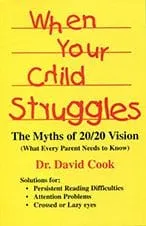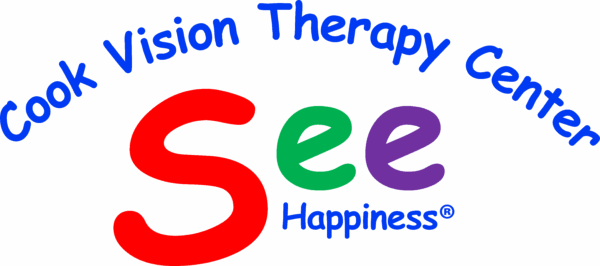3D Vision: Driving and Sports
“I’ve grown more confident in my tennis game. Prior to therapy, I had begun to fear being hit in the face by the ball and my reaction time was slowing down. After 4 months, my game is much more aggressive; I track the ball better and by development of my peripheral vision, I’m able to place the ball more accurately without “telegraphing” to the other player where I’m placing the shot. When the game heats up at the net, I’m confident, alert, and relaxed. When the game keeps me back in the service court, I’m able to put more power into my swing and I’m always aware of the other players positioning without taking my eye off the ball.”
What is 3D Vision? Understanding Stereopsis and Depth Perception
3D Vision is short for “three -dimensional vision” or two-eyed depth perception. 3D provides a stable, solid world. Indeed the medical term for 3D vision is stereopsis, which is derived from the Greek words for “solid vision.” 3D suggests how comfortably and efficiently your brain coordinates the fourteen muscles of your eyes. When such coordination is poor, 3D vision may be reduced, stressful or painful. If one eye turns in toward the nose (strabismus), then the brain may learn to suppress or ignore 3D vision at all times. Even in such extreme cases, 3D vision can often be partially or fully recovered with vision therapy.
The Role of 3D Vision in Spatial Awareness and Safety
If you can read the eye chart, then you have 20/20 acuity: the ability to see tiny details. Seeing little, however, does not guarantee that you can see big. Seeing the seams on the baseball while simultaneously seeing the ball’s position in space demands good central vision combined with good peripheral vision. 3D vision can add to your ability to see big, whether for reading the green or judging the curves on the road at night.
“I can now tell if my shot is going to land short, long, etc. I can “read” greens. My putting has improved tremendously.”
How Does 3D Vision Therapy Work? Techniques and Benefits
3D vision therapy uses personalized exercises to train eye coordination and depth perception. By strengthening how the eyes work together, it improves spatial judgment for tasks like driving or sports. Patients in Marietta, GA, practice activities targeting peripheral vision, tracking, and focus flexibility. Over 4–6 months, therapy retrains the brain to process 3D visuals efficiently, reducing eye strain and boosting confidence.
Improving Sports Performance with 3D Vision Therapy
Yes! Enhanced 3D vision sharpens depth perception, peripheral awareness, and reaction time—critical for sports like tennis or golf. Marietta athletes report better ball tracking, accurate shot placement, and reduced “telegraphing” after therapy. By improving how the eyes and brain coordinate, players gain confidence in fast-paced scenarios, such as net play or judging greens.
3D Vision Demonstration: Simple Tests You Can Try at Home
When vision is normal, each eye sees from its own angle. The brain combines the different view from each eye into a single three-dimensional picture. To see 3D for yourself, perform the following demonstration:
- Hold your right hand about ten inches in front of your face.
- Turn the palm-side of the hand toward your face.
- Half close your fist and extend your finger-tips directly toward eyes.
- With your other hand, cover first one eye, then the other.
- Compare how each eye’s view of your fingers appears different.
- Uncover your eyes and view your hand using both eyes at the same time.
- Behold any extra space between the fingers. You may even notice that your finger-tips appear to spring further out from your palm.
- This increased perception of space is known as stereopsis.
- Another way to experience two-eyed depth perception is to cover one eye and look around the room at objects positioned at different distances from you. Then uncover the eye and look with both eyes and see the extra space or “air” between the objects.
The Science Behind 3D Vision & Depth Perception
Understanding how 3D vision works unlocks why vision therapy in Marietta, GA, is transformative for athletes at Cobb County’s youth sports leagues or drivers navigating Atlanta’s busy highways. Our eyes and brain collaborate to create depth perception—the ability to judge distances critical for safety and performance.
How Do Our Eyes Create 3D Vision?
Each eye captures a unique angle of your surroundings. The brain merges these images through stereopsis (3D vision), processing subtle differences in the visual cortex to create depth. Key components:
-
Binocular Vision: Both eyes must align perfectly (a skill honed through vision therapy near Marietta Square).
-
Neural Processing: The brain interprets disparities between each eye’s image.
For athletes like those at Sprayberry High School, this split-second coordination means catching a fly ball or dodging opponents.
Why Depth Perception Matters for Marietta Residents
Accurate depth perception is vital for:
✅ Safely merging onto I-75 during Atlanta rush hour.
✅ Judging a soccer ball’s trajectory at Al Bishop Softball Complex.
✅ Parallel parking near Marietta Square’s historic district.
A Journal of Vision study confirms even minor binocular vision issues slow reaction times—critical for Cobb County drivers and athletes (Howard & Rogers, 2012).
The Role of Eye Muscle Coordination
Your eyes rely on 14 muscles working in sync. Poor coordination—common in conditions like strabismus (crossed eyes) or convergence insufficiency—forces the brain to ignore one eye, flattening 3D vision. Local clinics like Marietta Family Eye Care specialize in retraining these muscles through targeted therapy.
Expert Insight, :
“3D vision isn’t just clarity—it’s your brain and eyes collaborating to map space. When this teamwork falters, personalized vision therapy in Cobb County can rebuild coordination for safer driving and sharper sports performance.”
Common Vision Problems Affecting Driving & Sports Performance
Many Cobb County residents unknowingly battle vision issues that jeopardize safety on Atlanta’s I-75 or during games at Truist Park. Early detection through vision therapy in Marietta, GA, can transform performance behind the wheel or on the field.
Strabismus (Eye Turn)
When eyes misalign (inward, outward, up, or down), depth perception falters—a risk for drivers navigating Cobb Parkway’s curves or athletes tracking fast pitches at Marietta’s East Cobb Baseball Complex.
-
Local Impact: Untreated strabismus increases collision risks near Marietta Square’s crowded intersections.
-
Solution: Clinics like Marietta Vision Center use prism lenses and therapy to realign eyes.
Amblyopia (Lazy Eye)
Often diagnosed in Cobb County schools, amblyopia weakens 3D vision as the brain ignores one eye. Though common in kids, studies confirm adults can improve with therapy (Holmes & Clarke, 2006).
-
Sports Example: A “lazy eye” may cause misjudged swings at Marietta Golf Center.
-
Local Success: Programs at Peachtree Vision Therapy help adults regain depth perception for tasks like parking near The Avenue West Cobb.
Convergence Insufficiency
Struggling to focus on close objects? This condition plagues drivers reading GA-400 exit signs or athletes tracking soccer balls at Al Bishop Park. Symptoms include:
➔ Eye strain during long drives to SunTrust Park.
➔ Headaches after practice at Marietta High School.
Treatment: Vision therapy at Cobb County Eye Specialists strengthens eye teamwork, boosting reaction times.
The Hidden Impact of Poor 3D Vision on Daily Life
Struggling with depth perception in Marietta, GA, isn’t just about sports or driving—it can disrupt even simple tasks. Many patients don’t realize how often poor 3D vision affects their daily routines:
- Tripping on stairs at home or in public spaces like Marietta Square due to misjudging step heights.
- Spilling drinks or knocking over objects when reaching for items, a sign of impaired spatial awareness.
- Discomfort with VR headsets or 3D movies at local theaters like The Strand, causing headaches or dizziness.
- Difficulty parking in tight spots at Town Center Mall, leading to anxiety behind the wheel.
Why This Matters for Marietta Residents
Poor 3D vision often goes undiagnosed because symptoms feel “normal” to patients. At Cook Vision Therapy, we’ve helped Marietta clients uncover how subtle depth perception issues contribute to chronic fatigue, frustration with routine tasks, or even social withdrawal. For example, a Kennesaw parent realized her frequent spills while cooking were linked to poor eye coordination, not clumsiness. Therapy restored her confidence in the kitchen and beyond.
3D Vision Therapy for Children
In Marietta, GA, childhood struggles in school or sports are sometimes rooted in underdeveloped 3D vision. Early intervention can address:
- Reading difficulties: Skipping lines, losing place, or avoiding books due to eye strain.
- Sports challenges: Missing catches in Little League games at Al Bishop Park or hesitating during soccer drills.
- Hand-eye coordination issues: Struggling with handwriting at local schools like Marietta City Schools.
References
-
Scheiman, M., Mitchell, G. L., Cotter, S., et al. (2005). Treatment of Convergence Insufficiency in Children: A Randomized Clinical Trial. Optometry and Vision Science, 82(7), 583-595.
How Cook Vision Therapy Helps Young Patients
Dr. Cook’s pediatric program uses play-based exercises tailored to Marietta’s active families. For instance, a Smyrna 10-year-old improved his baseball batting average by 40% after therapy strengthened his depth perception and tracking skills. We focus on:
- Interactive games to make therapy engaging.
- Parent education to reinforce progress at home.
- Collaboration with teachers to support classroom performance.
Schedule an Appointment
At Cook Vision Therapy, we specialize in 3D vision. Dr. Cook instructs doctors from around the world on the subject. If you are interested in seeing the dimensions of the world for improved school, sports, or driving, call 770-419-0400 for a Free Phone Consultation and learn if you may be a candidate for enhanced 3D vision. Or contact us.
FAQs: 3D Vision for Driving & Sports
-
What is 3D vision, and how does it impact driving and sports?
3D vision (stereopsis) is depth perception that allows you to judge spatial relationships. It’s critical for tracking moving objects (like tennis balls) and gauging distances while driving. Poor 3D vision can slow reaction times and reduce accuracy.
-
Can 3D vision therapy improve my tennis or golf performance?
-
How does poor 3D vision affect night driving safety?
-
Why do 3D movies cause headaches or dizziness?
-
How long does it take to see results from 3D vision therapy?
-
Will 3D vision therapy help with reading fatigue?
-
Where can I get expert 3D vision therapy in Marietta, GA?
-
What are signs I might need 3D vision therapy?
-
Does 3D vision therapy work for drivers?
-
Can you drive safely with poor depth perception?
-
What sports benefit most from 3D vision therapy?
-
How do vision therapy exercises work for athletes?
Check Out Our Resources
Dr. Cook’s Publications:
- Authored books VISUAL FITNESS and WHEN YOUR CHILD STRUGGLES.
- Published articles in top optometric journals.
- His article “Eyesight, infinity and the human heart” was voted “Best Non-Technical Article” by the Association of Optometric Editors.





